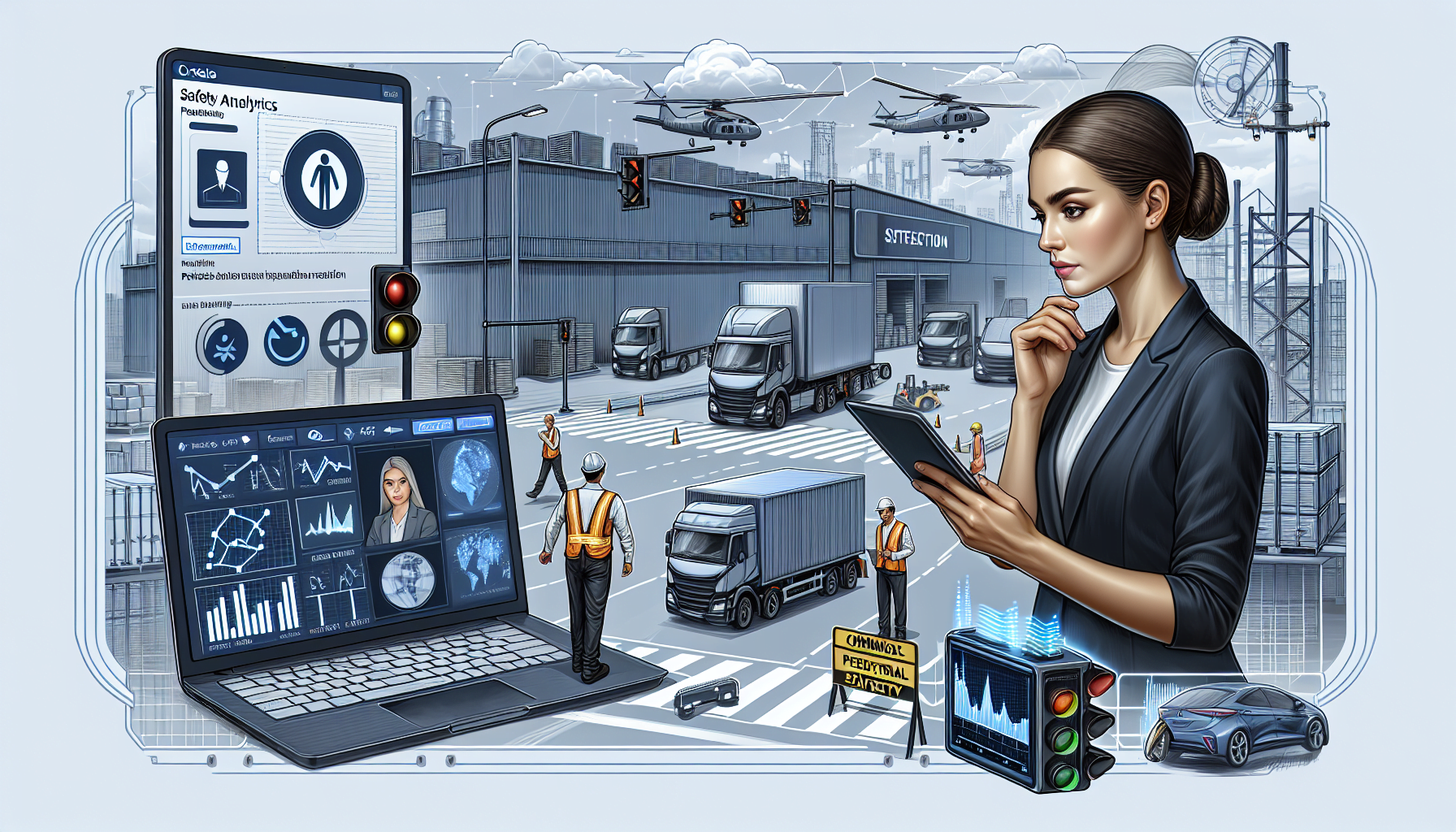Warehouse operations are dynamic and fast-paced environments, where safety should always be a top priority. With the constant movement of forklifts, machinery, and pedestrians, ensuring warehouse pedestrian protection is vital to prevent accidents and promote a safe work environment. One effective approach to enhancing pedestrian safety in the warehouse is through the use of safety analytics.
The Importance of Warehouse Pedestrian Protection
Pedestrian safety is crucial in warehouse operations due to the presence of heavy machinery, such as forklifts, reach trucks, and pallet jacks. Accidents involving pedestrians and moving equipment can lead to serious injuries, including crushing, collisions, or falls. In fact, the Occupational Safety and Health Administration (OSHA) identifies forklift-related accidents as one of the leading causes of workplace fatalities in the United States.
Implementing effective warehouse pedestrian protection measures not only helps prevent accidents but also contributes to better productivity, efficiency, and overall warehouse operations. By prioritizing pedestrian safety, companies can create a work environment that fosters employee well-being and reduces the risk of costly workplace accidents.
The Role of Safety Analytics
Safety analytics plays a crucial role in improving warehouse pedestrian protection. It involves the collection, analysis, and interpretation of safety-related data to identify potential risks and develop targeted strategies for mitigating and preventing accidents.
By leveraging safety analytics, warehouse managers can gain valuable insights into their operations and identify key areas for improvement. These analytics can provide data on patterns, trends, and potential hazards, helping companies optimize workflow processes, safety protocols, and equipment placement within the warehouse.
With safety analytics, companies can track and monitor various metrics, such as pedestrian traffic patterns, forklift speed and proximity to pedestrians, and near-miss incidents. This data allows warehouse managers to identify potential risks, assess the effectiveness of current safety measures, and make data-driven decisions to optimize pedestrian safety.
Implementing Safety Analytics for Warehouse Pedestrian Protection
To effectively implement safety analytics for warehouse pedestrian protection, companies can follow these steps:
- Data Collection: Start by collecting relevant data on pedestrian activity, forklift movements, and historical incident reports. This data can be obtained through various means, including digital tracking systems, surveillance cameras, and employee reports.
- Data Analysis: Once the data is collected, analyze it to identify patterns, trends, and hotspots where potential accidents are more likely to occur. Look for instances of near-miss incidents, forklift-pedestrian interactions, and areas with high pedestrian traffic.
- Risk Assessment: Based on the data analysis, conduct a comprehensive risk assessment to identify the most significant hazards and potential areas for improvement. Prioritize addressing these risks to enhance pedestrian safety.
- Develop Safety Strategies: Utilize the insights gained from data analysis and risk assessment to develop targeted safety strategies. This may include implementing physical barriers, updating floor markings, adjusting pedestrian walkways, or enhancing communication and training programs.
- Continuous Monitoring: Implement a system for continuous monitoring and evaluation of safety measures. Regularly review data, analyze reports, and solicit feedback from employees to ensure the effectiveness of implemented safety strategies.
By following these steps and leveraging safety analytics, companies can create safer warehouse environments, improve employee well-being, and reduce the risk of accidents and injuries.
If you’re looking to enhance warehouse pedestrian protection, consider investing in a reliable forklift pedestrian detection system. These advanced systems utilize cutting-edge technology, such as sensors and cameras, to detect movement and proximity between forklifts and pedestrians. They can provide real-time alerts and warnings, helping prevent accidents and ensuring warehouse pedestrian safety.
Conclusion
Warehouse pedestrian protection is a critical aspect of ensuring a safe and efficient working environment. By incorporating safety analytics into warehouse operations, companies can gain valuable insights, mitigate risks, and improve overall pedestrian safety. Prioritizing safety not only protects employees but also contributes to enhanced productivity, efficiency, and cost-effectiveness in warehouse operations.

